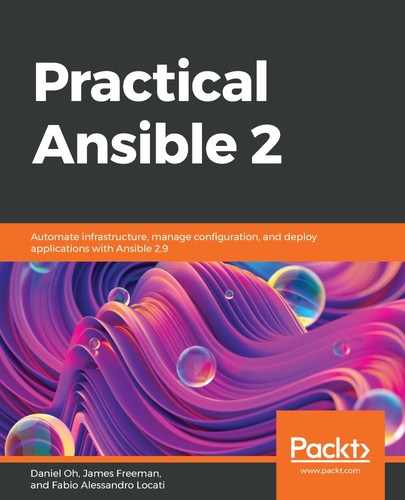Ansible is a very powerful and versatile automation engine that can be used for a wide variety of tasks. Understanding the basics of how to work it is of paramount importance, before addressing the more complex challenges of playbook creation and large-scale automation. Ansible relies on a language called YAML, a simple-to-read (and write) syntax that supports the rapid development of easy-to-read and easy-to-maintain code and inherits a number of valuable features from the Python language that it is written in, including Jinja2 filtering.
In this chapter, you learned the fundamentals of working with various Ansible programs. You then learned about the YAML syntax and the ways that you can break down your code into manageable chunks to make it easier to read and maintain. We explored the use of ad hoc commands in Ansible, variable definition and structure, and how to make use of Jinja2 filters to manipulate the data in your playbooks.
In the next chapter, we will take a more in-depth look at Ansible inventories and explore some of the more advanced concepts of working with them that you may find useful.
